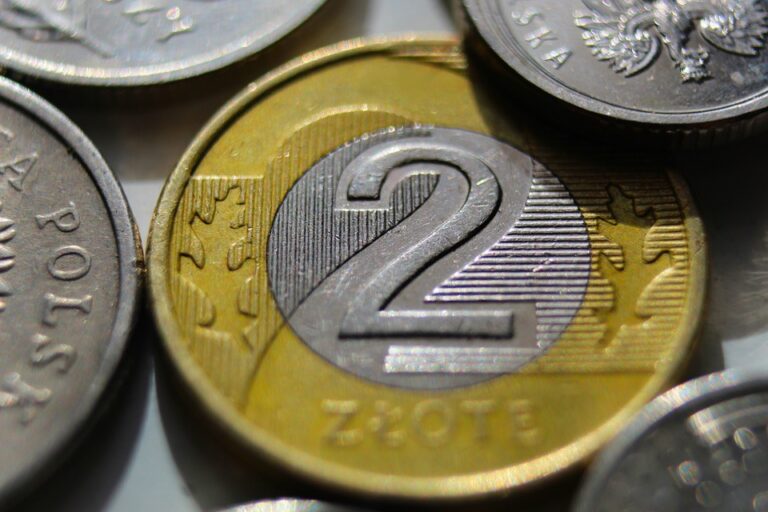Last updated Mar. 24, 2023 by Charles Zemub
Consider constructing a certificate of deposit “ladder” if you are seeking a savvy method to use certificates of deposit (CDs) as part of your current savings plan and want to maximize return even when rates remain low.
CDs, also known as certificates of deposit, may not be the most rewarding option to increase the value of your money right now. Still, they can provide you peace of mind during times of economic unpredictability.
While the impacts of the present economic crisis continue to unfold, keeping your funds in a secure location may provide a welcome feeling of calm in the midst of uncertainty.
And by planning forward with a CD ladder, you are not only protecting your money in the here and now but also positioning yourself to make the most of higher interest rates when they eventually come back.
When you open a certificate of deposit (CD), you typically sign an agreement to “lock in” your cash for the whole of the CD’s term in return for a predetermined interest rate.
If you violate the terms of that agreement, you will most likely be subject to a penalty for an early withdrawal. However, laddering allows you more freedom to lock in many rates at once and stagger the maturities of your loans.
An established CD laddering model
Five “rungs” make up a traditional CD ladder. These rungs each stand for an equal-value CD, and because of the staggered periods, one CD matures each year. If you wanted to invest $5,000 for five years, you could do it like this:
- In a 12-month CD, $1,000.
- $1,000 in a CD for 24 months.
- $1,000 in a CD for 36 months.
- $1,000 in a CD for 48 months.
- A 60-month CD for $1,000.
By doing this, you may take advantage of the long-term CDs’ strong returns and the flexibility of having one-fifth of your investment become available each year when the 12-month CD expires by using the money to buy a new 60-month CD that would mature in year six.
Alternative laddering strategies

There is no need for laddering to be universal. A four-rung ladder consisting of a three-month, six-month, nine-month, and 12-month CD might be useful for those who can’t commit money for a full year since it releases money every three months.
Alternatively, if you think you’ll need the money more regularly, arrange your ladder, so one CD matures each month.
Modifying economic estimates is another factor to take into account. The safest overall strategy in uncertain times is a CD ladder with equal rungs.
To take advantage of better deals when they become available, you may wish to invest a larger amount of your ladder fund in short-term CDs if interest rates are obviously increasing.
When interest rates are decreasing, it makes sense to put as much money as possible into long-term CDs since you may not have another chance to lock in such favorable rates for a while.
CD ladder advantages
Whichever strategy you choose, CD laddering provides a variety of benefits over buying a single CD, including:
Higher-income plus liquidity:
Once your first CD matures, you’ll receive long-term CD rates without sacrificing regular access to your money. This will increase your income while maintaining liquidity.
Flexibility
You’ll be able to modify your ladder to reflect shifting financial circumstances and the state of the economy.
Peace of mind
You are prepared for anything that may arise. Your return is already guaranteed, so you benefit from rate drops. Additionally, as rates climb, you’ll have money on hand to make frequent investments.
The majority of financial experts agree that interest rates may increase quickly, thus it could be a good idea to establish a shorter-term CD ladder to preserve your alternatives.
Cd ladder example
Take, for instance, the scenario in which you have saved up $10,000 and want to use that money during the following ten years to further your education.
You don’t want to put it in an investment account because you don’t want to take the risk, but you still want to make the most of the interest you can earn before you start investing.
For the purpose of illustrating an example, using our CD calculator, if you were to invest that $10,000 in a five-year CD generating 1.2% interest today, your total cash at maturity would equal $10,614.
However, suppose you begin constructing a ladder using certificates of deposit (CDs) at regular intervals. In that case, you have the opportunity to lock in greater rates over time and maintain partial access to your assets when you need them without incurring any penalty.
You start by cracking open five CDs that are due to mature at one-year intervals, each with $2,000 in it.
In light of the current historically low-interest rate environment, it is important to note that a laddering approach may not offer the same rewards now as it could have even a year ago.
This is something that should be kept in mind. Long-term certificates of deposit (CDs) with durations of three and five years have earned about one full percentage point more in interest than short-term CDs during the previous several years. The difference between the two now is almost insignificant, if it can even be called that.
Cd ladder rates
Robert Farrington, the founder of TheCollegeInvestor.com, a blog based in California that is devoted to assisting millennials in paying off student debt and getting a head start on building wealth, says that “in general, this is a great strategy” because longer-term certificates of deposit typically pay more than shorter-term certificates of deposit do.
“I say normally because we’re in a bit of an unusual period, and that’s not the case right now,” she said. “I say typically because we’re in a bit of an abnormal moment. Most longer-term certificates of deposit (CDs) are now being offered at the same rate as one-year CDs.
However, even a fraction of a percent or less in additional interest will significantly increase over time. Because of this, it is essential to look around for each of the CDs that comprise your ladder in order to verify that they are congruent with your objectives.
Are CD ladders a good investment?
A certificate of deposit ladder might assist you in building an investment return that is more predictable.
In addition to this, you will have the flexibility to retrieve a part of your savings each time a certificate of deposit reaches its maturity, which gives you a chance to earn larger returns than you would with a single short-term CD.
The trade-off is that there is a possibility that you may suffer financial losses due to inflation over the long run. In addition, you risk missing out on potentially superior returns made available by alternative investment vehicles with a higher potential for development.
Before committing to establishing a CD ladder, you should consider why you want to do so. It’s possible that it would be an excellent choice for your short-term savings objectives, but your long-term savings plan could call for a supplement in the form of extra investment vehicles.
Good Read: How do certificates of deposits work
How to build a CD ladder?
The following is an example of how to construct a CD ladder properly. Suppose you want to construct a CD ladder that spans five years and has five rungs.
If you had $2,500 to invest, you may put $500 into a certificate of deposit (CD) with a maturity date of one year and an annual percentage yield of 0.65 percent. This would provide you with a total return on your investment of 2.5%.
Put $500 into a two-year CD with an annual percentage yield of 0.8 percent, $500 into a three-year CD with an annual percentage yield of 0.95 percent, $500 into a four-year CD with an annual percentage yield of 1.05 percent, and $500 into a five-year CD with an annual percentage yield of 1.2 percent.
You can withdraw your money after the first certificate of deposit expires after a year, or you may continue to expand your ladder by reinvesting the funds into a new five-year certificate of deposit with a greater rate.
After that, when the certificate of deposit with the two-year term expires a year from now, you should use the funds from that account to create a new certificate of deposit with the five-year term.
Proceed with the procedure on an annual basis for as long as you need to to keep climbing the CD ladder.
Are CDs worth it in 2022?
It can be beneficial to invest in certificates of deposit in 2022 if interest rates are higher than they are expected to be (CDs).
The Federal Reserve has signaled that it may execute several rate increases in 2022, which may result in higher CD rates for depositors if other financial institutions follow the Federal Reserve’s example and raise their own rates in response to the Federal Reserve’s actions.
Frequently Asked Questions
1. What is the benefit of a CD ladder?
You may construct a reliable investment return using a CD ladder. Additionally, you may access a part of your savings every time a CD matures, and the possibility for higher returns than you would with a single short-term CD are both benefits. The trade-off is that you risk long-term loss due to inflation.
2. How much will a CD earn in 5 years?
A five-year CD might generate roughly $40 in interest at a competitive online bank, or a 1.50% annual percentage yield (APY). Earning around $7 is possible with a five-year CD rate more in line with the average, say, 0.64%.
3. Who has the highest-paying CD right now?
The best CD rates offered by our partners are at Rising Bank (3.30% APY), ConnectOne Bank (3.30% APY), and State Bank of Texas (3.25% APY), all for terms of 1 year.
4. How many CDs can you have at one bank?
There is no limit to the number of certificates of deposit (CDs) you may have, and you can hold CDs at various banks. The number of CDs you need and want to hold might vary depending on your own financial situation.
5. How do you make a monthly CD ladder?
Once your three-month CD expires, you may withdraw the amount you need (in any currency) and reinvest the balance in a twelve-month CD. Your money will be made available to you every three months.
6. What is the best CD rate for $100000?
The best Cd rate for $100000 is the Minimum annual percentage yield (APY) for a $100,000 deposit at CreditOne Bank is 3.35%, while at Navy Federal Credit Union, it’s 2.85%. For a minimum investment of $100,000, you may get an annual percentage yield of 2.85% at SchoolsFirst Federal Credit Union.
Summary
You may find that purchasing certificates of deposit assists you in achieving your desired level of savings.
It is crucial to do some comparison shopping before deciding on a certificate of deposit (CD) since various banks may offer varying rates and conditions. It’s possible that internet banks provide the greatest rates on certificates of deposit.
Also, look into other possible alternatives to certificates of deposit, such as high-yield savings accounts or money market accounts, and determine which one offers the highest rate of return.






